Fortress Museum «Korela»
47 photo with description02.08.2020 09:01
02.08.2020 09:01
Andrey Panevin

In the north of the Leningrad region is one of the most ancient cities of Russia - Priozersk, and its main attraction is the Korela fortress .

Tourist sign by the road.
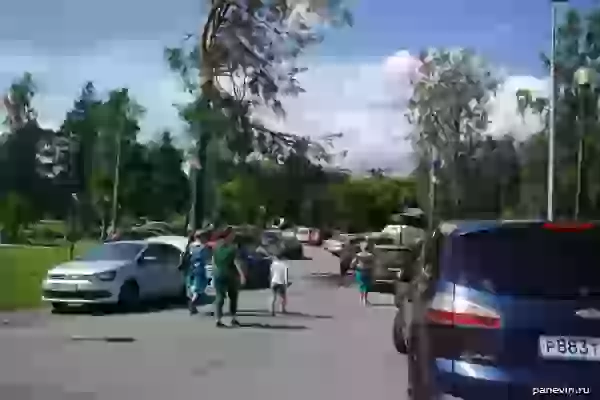
It was a fine day and many cars came for a walk around Priozersk and the fortress.
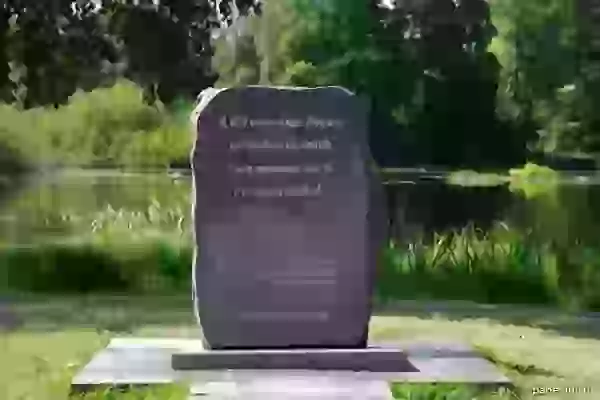
According to some sources, Prince Rurik died here in 879, as the inscription on the memorial stone says.
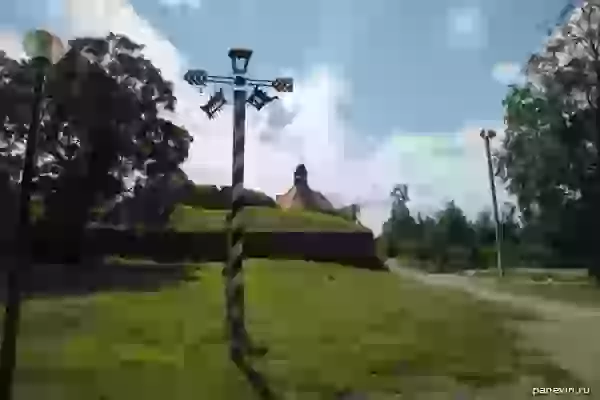
Entry sign in Russian and Finnish.
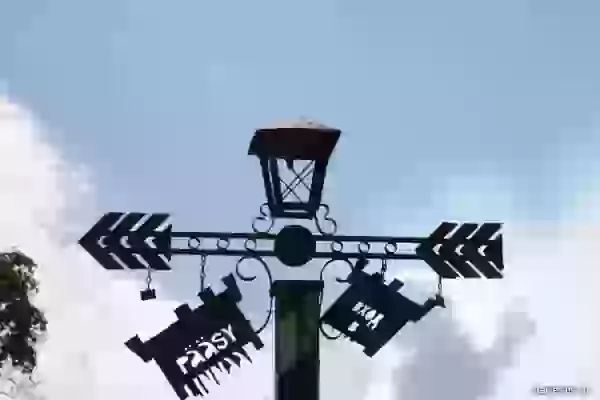
I decided to walk counterclockwise, bypassing the perimeter of the fortress.
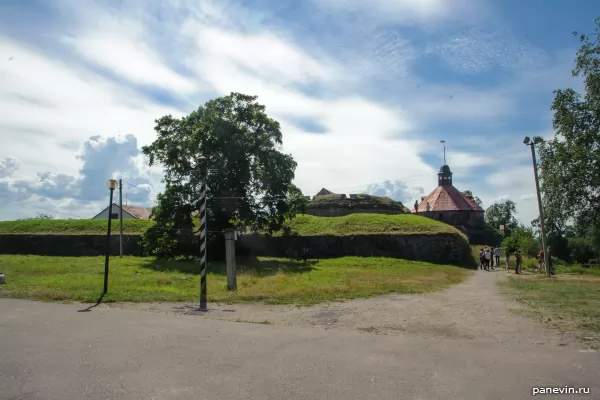
Fortress-Museum "Korela" (Old fortress).
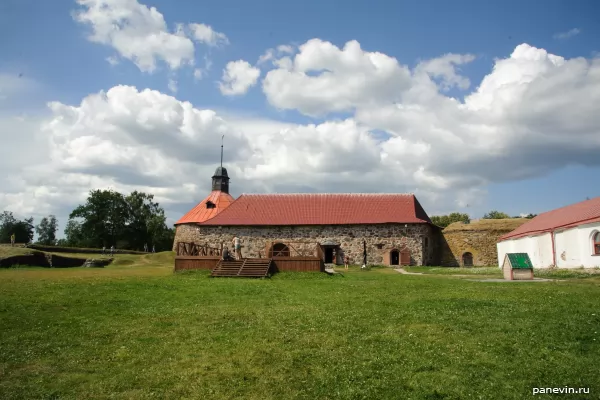
Old Arsenal, built in 1591, on the left behind it is the Round Gate Tower (Lars Torstensson Tower, Pugachevskaya Tower), built by the Swedes in 1585
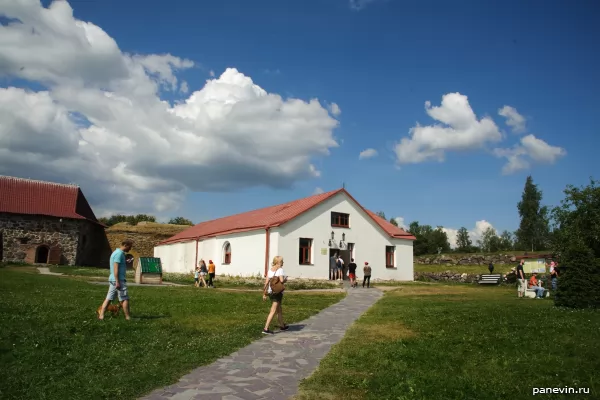
New Arsenal. Built in 1776 for the same purposes as the old one. Nowadays there is a museum of local lore.

Memorial sign to the Kexholm regiment, Korela fortress. Installed in honor of the 300th anniversary of the regiment established by Peter I in 1710. The anchor at the base symbolizes the participation of the regiment in naval battles, crowned with a soldier's shako from a Keksholm. On the sides there are mock-ups of 18th century cannons.
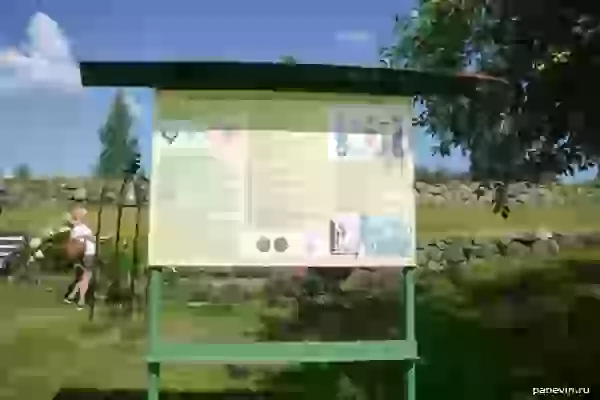
A stand with a brief history of the Life Guards of the Kexholm Emperor of the Austrian Regiment.
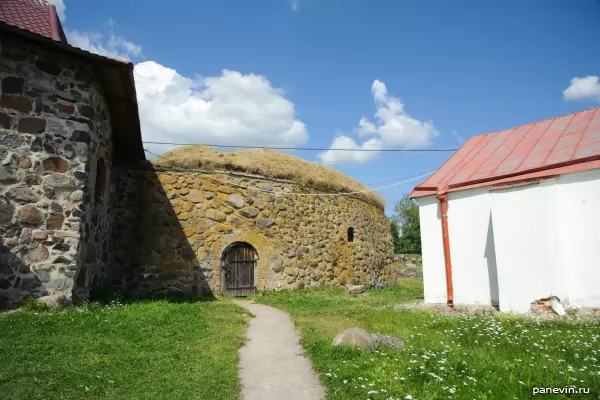
Cavalier Bastion on the site of the Trubnaya Tower, 1592.
There was a powder magazine inside.
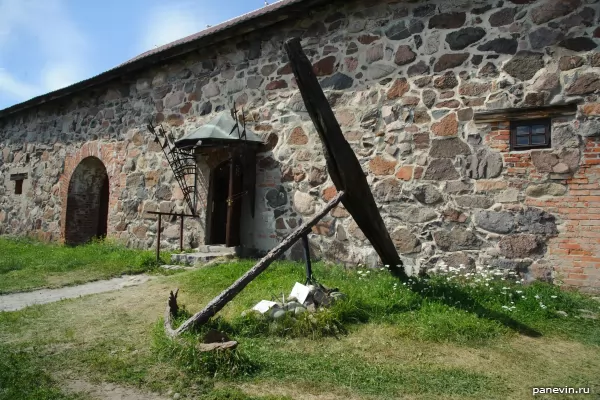
Forged two-horned anchor with a wooden stock from the Swedish brig-cotter "Dragon", which sank in the Vyborg Bay on July 3, 1790 during the famous Vyborg sea battle the Russian fleet won a brilliant victory over the Swedish fleet.
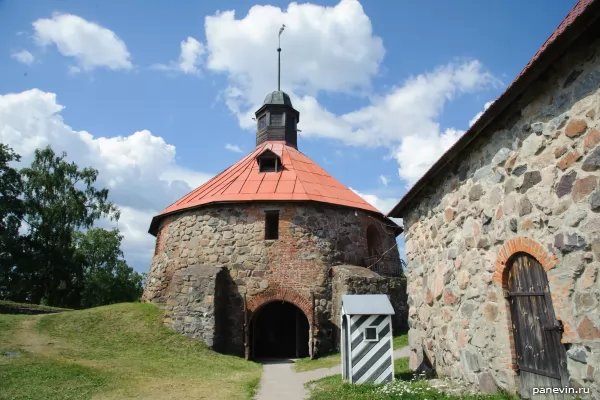
Gate Tower
Round Gate Tower (Lars Torstensson Tower, Pugachevskaya Tower), built by the Swedes in 1585.
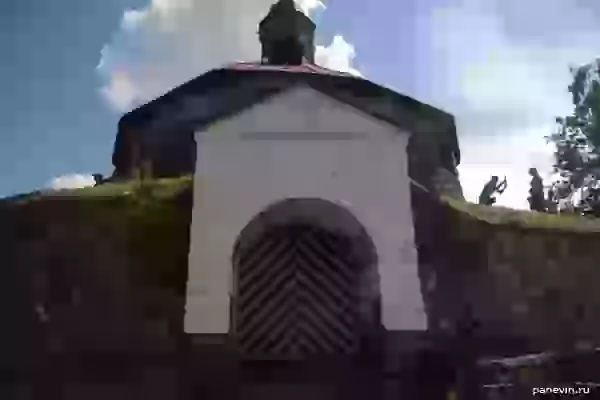
The Gate Tower, a view from the outside of the fortress.
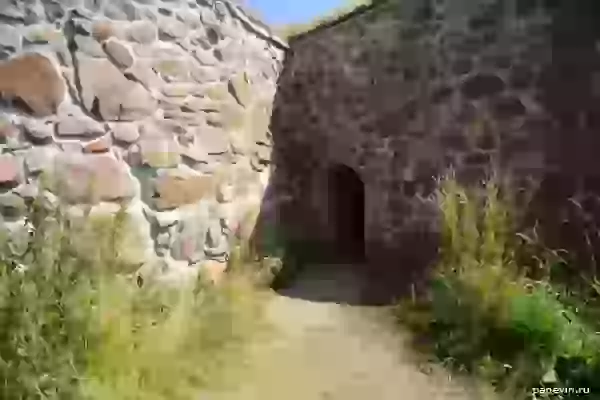
Fortress wall with "secret" gates. This is a distinctive feature of the ancient Russian fortification.
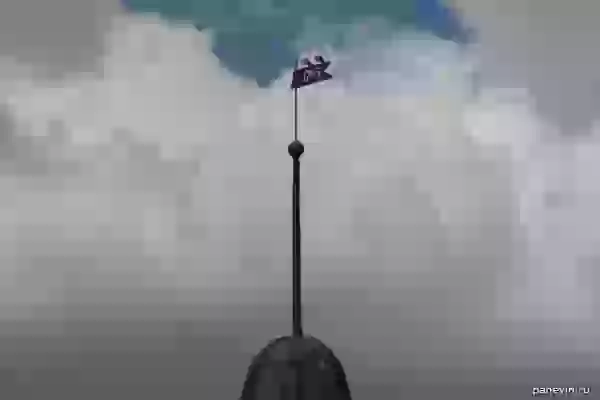
The wooden spire is crowned with the flag with the date 1795. This is not the date of the fortress construction - the fortress is much older. This is the date of the next perestroika.
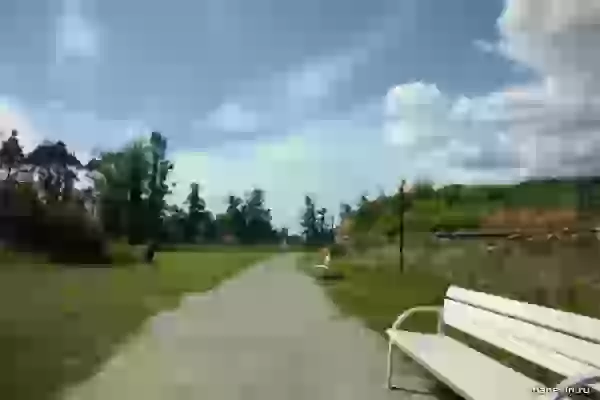
There is an excellent path with lanterns and benches around the fortress. However, there are not enough benches.
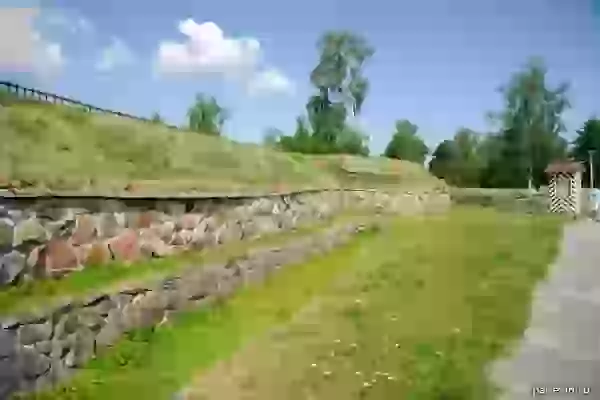
Bastion Bastion (Bannaya, Residential or Pristanny Rondel) on the right, 1590. Left - Tenal (frontal fortifications).
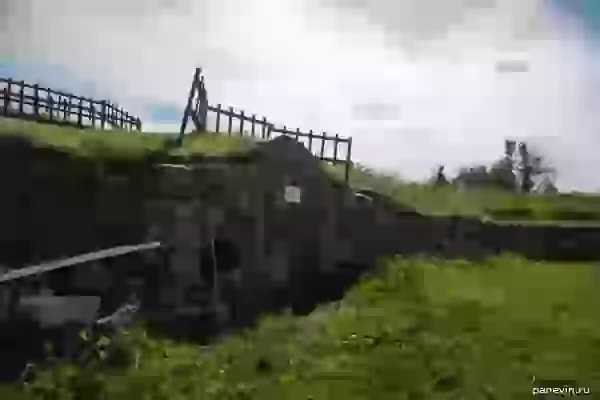
A door to some kind of service room.
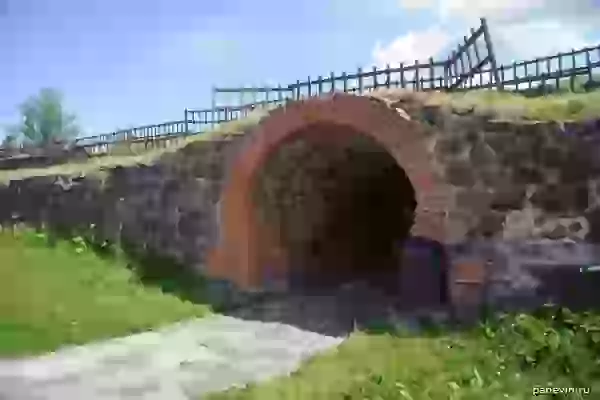
Water (Mill) Gate, circa 1590. The main entrance to the territory of the fortress.
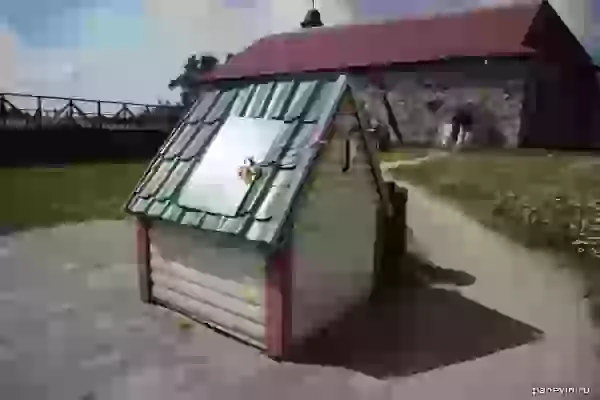
Well. The handle has a “do not twist” sign, but the handle is screwed on. For everyone. I think there are a lot of people who want to play.
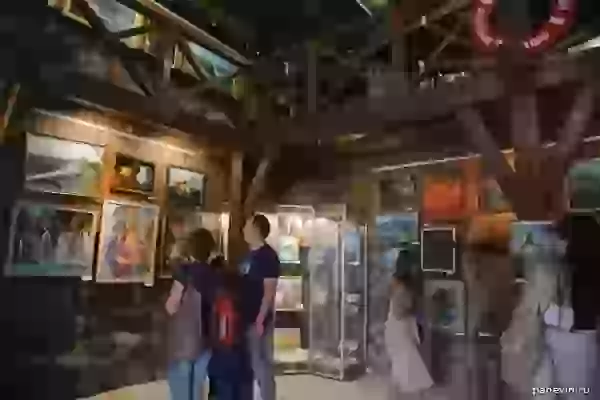
There is an exhibition of paintings in the Gate Tower.
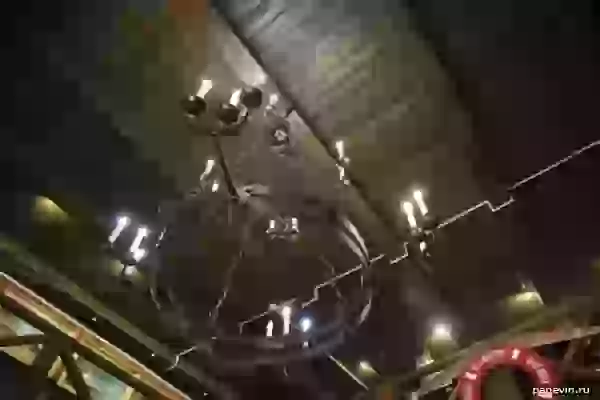
Chandelier a la medieval.
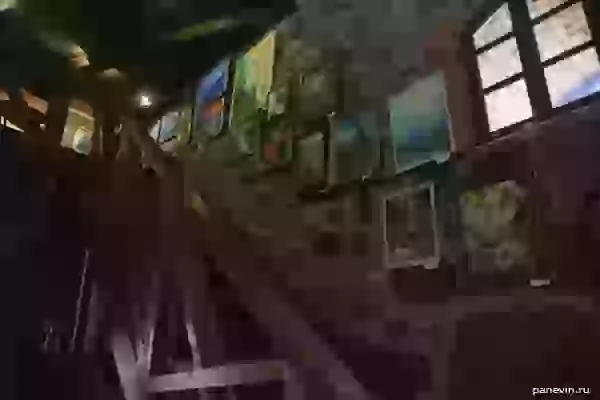
Pictures are mainly on two themes: nature of Karelia
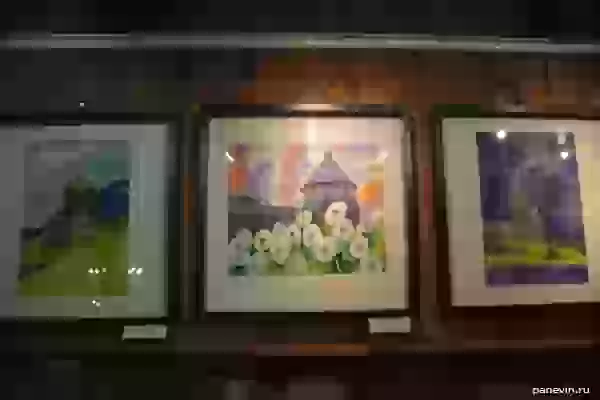
and Karelian fortresses.
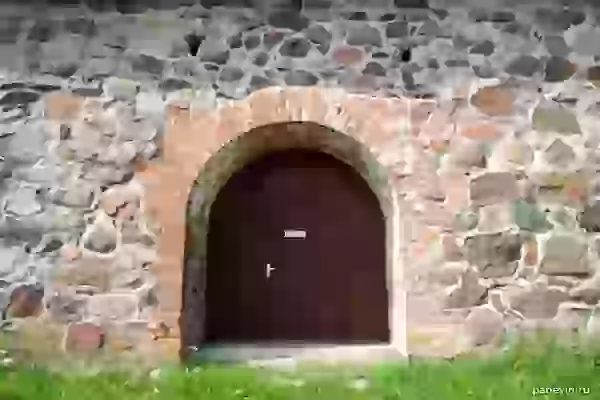
A door to a utility room.
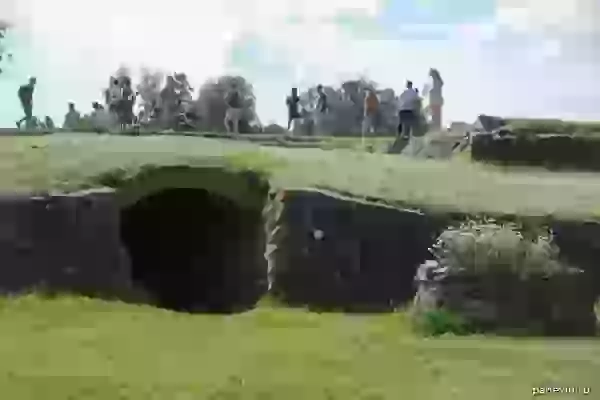
Ancient well (right) and Fish Gate in Klok Bastion (Masovaya or Fish Rondel, 1590s).
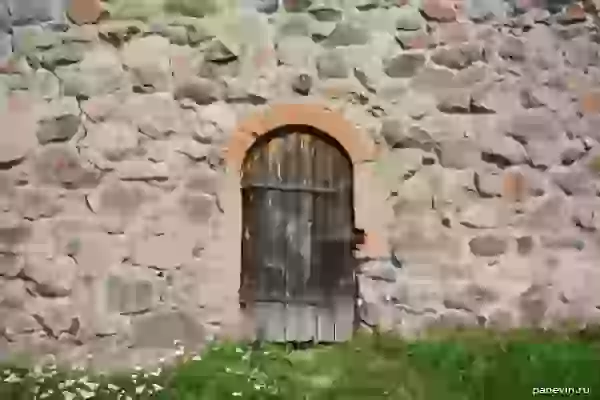
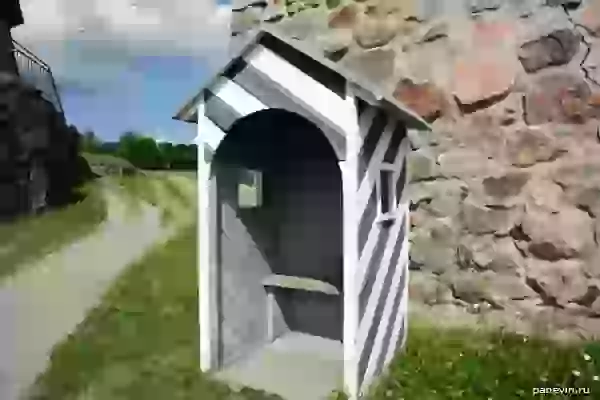
Guardhouse.
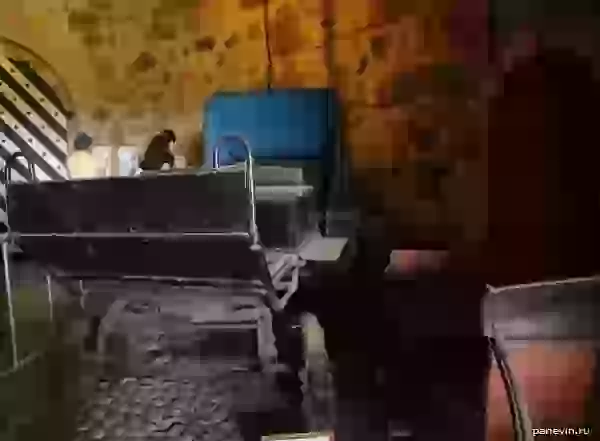
A carriage and a sleigh inside the Petrovsky gate. In the 18th century, the border was pushed far to the west, defensively, the fortress lost its meaning and, like the Oreshek fortress, was used as a prison.
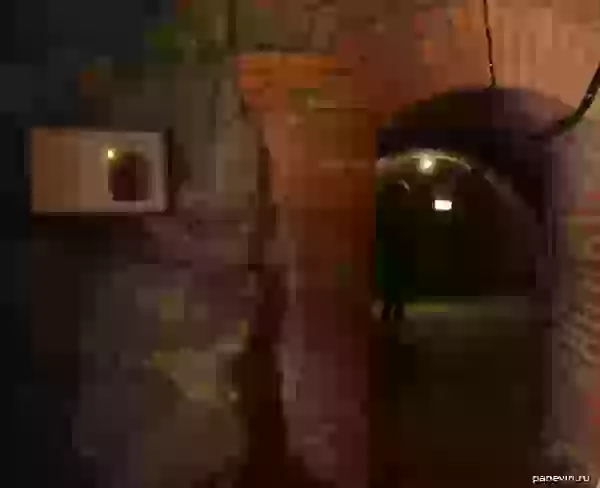
In September 1710, the Swedes were driven out of the city and Peter I personally ordered the wooden gate to be upholstered with captured Swedish armor. In 1994, the armor was transferred to the territory of the New Fortress at the request of the restorers.
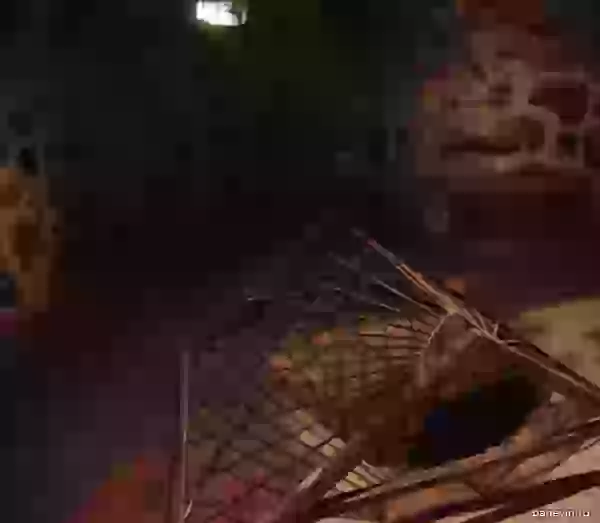
The Pugachevs Chamber. Since January 24, 1775, this room has housed the Pugachev family - the first wife Sofya Dmitrievna with three children, as well as the second wife “the Ural queen” Ustinya Petrovna Kuznetsova.
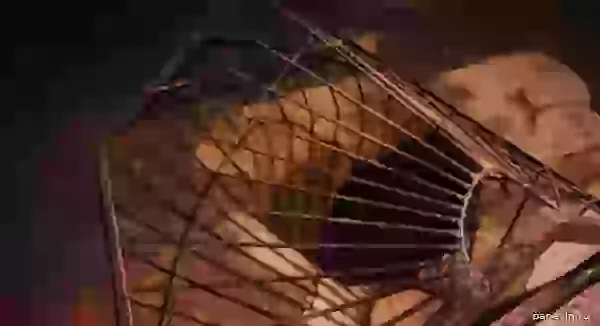
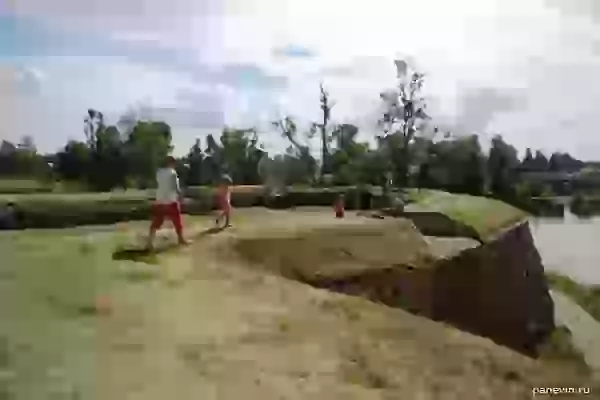
Clockwork Bastion
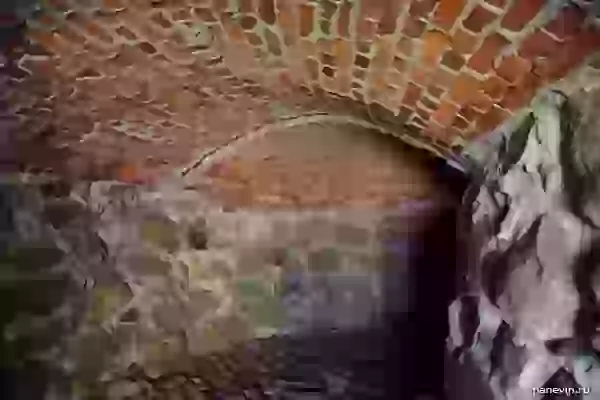
Fish (Clock) Gate.
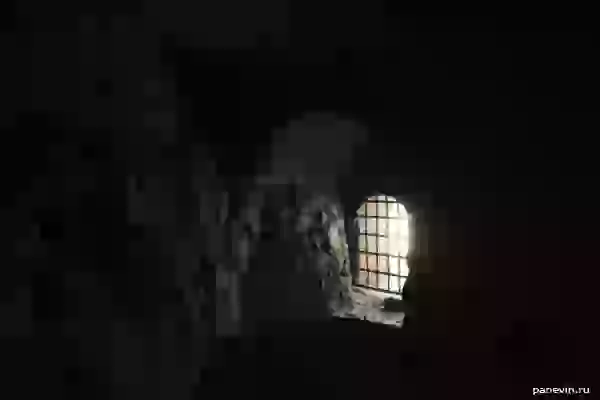
The grill that covers the Fish Gate from the outside.
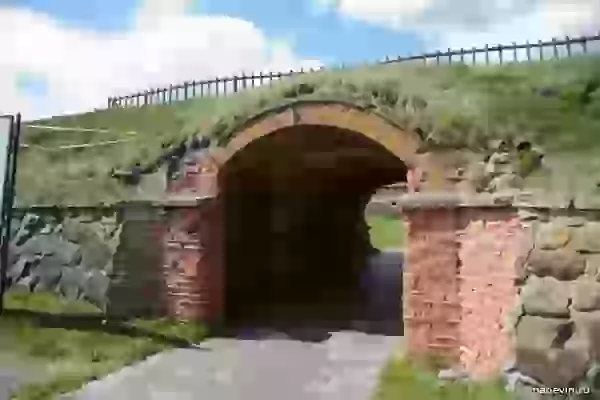
Water Gate.
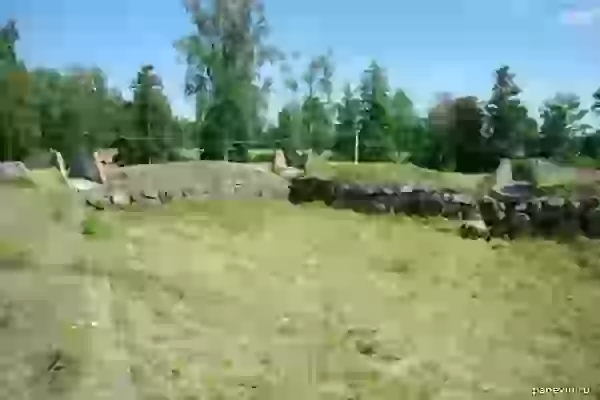
Bastion Bastion, there were guns in niches in the 18th century.
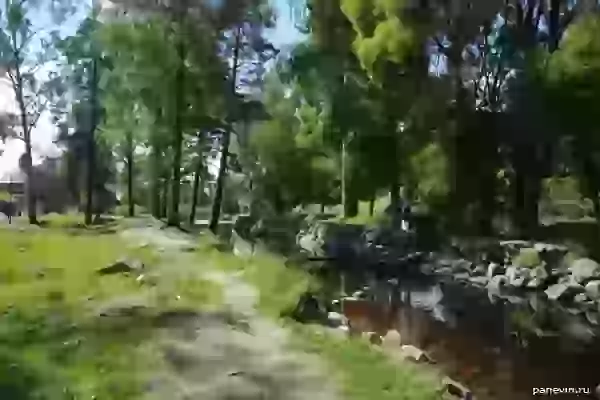
The channel between the "Old" and "New" fortresses.
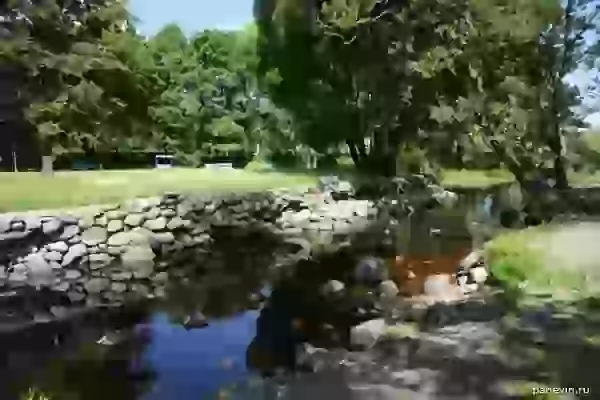
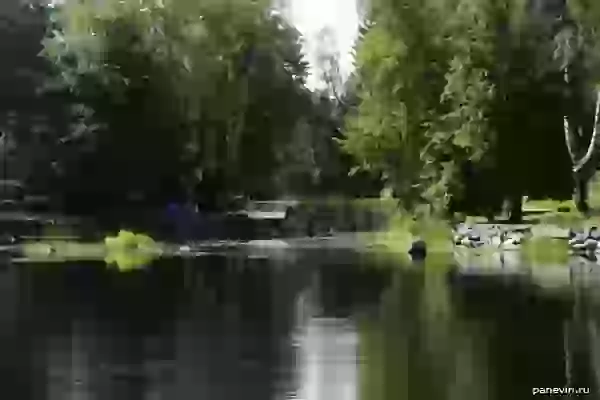
There is a wonderful lake near the fortress walls.
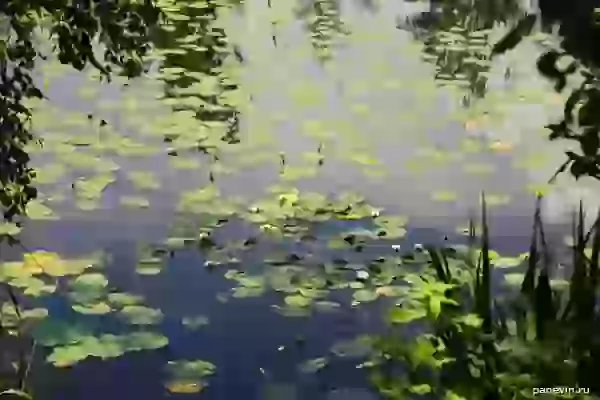
Water lilies, lilies, beauty!
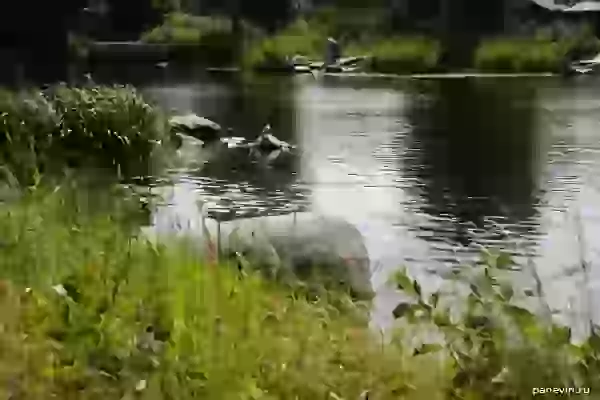
Terns hang out in the pond
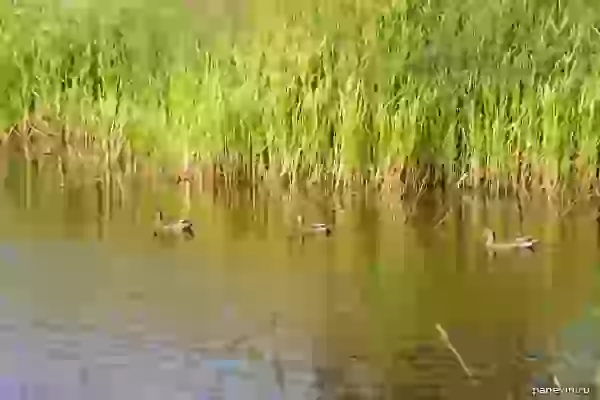
And ducks, periodically arranging fights with terns for territory.
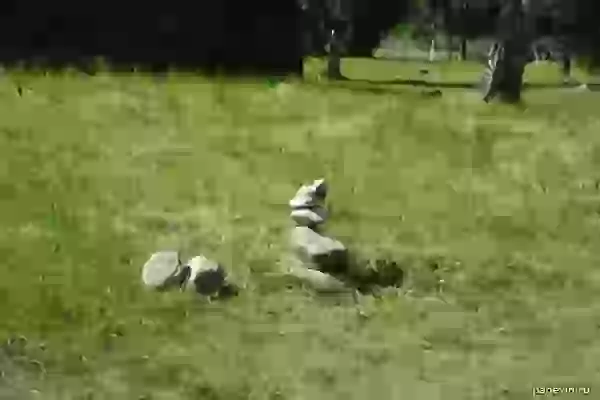
In Karelia you can often find such pillars of stones. No one remembers the meaning of stacking stones like this, but pagan traditions are still alive.
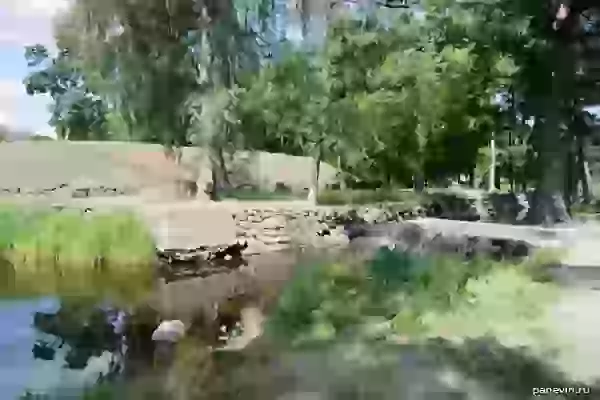
In the foreground is the base of the former bridge, in the back are the remains of the fortifications of the New Fortress (there is now the MO sanatorium and you just can't get there).
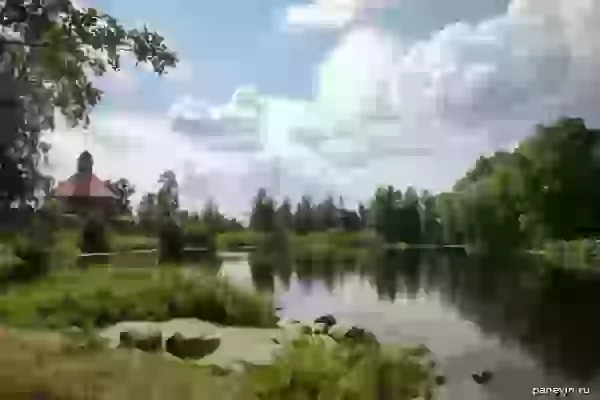
A wonderful place to relax under the shade of trees
Medieval Korela was the most northwestern city of Russia. The fortress was founded at the turn of the XIII and XIV centuries by Novgorodians on the island of the Uzerve (Vuoksy) river to protect the north-western borders of the republic from the Swedes. However, the history of the city is possibly even more ancient.
How to get to the Korela fortress: the easiest and fastest way is by electric train "Lastochka" from Finland Station in St. Petersburg. One-way ticket 400-420 rubles, entrance to the territory of the fortress - 100 rubles, visiting the museum is free (!)
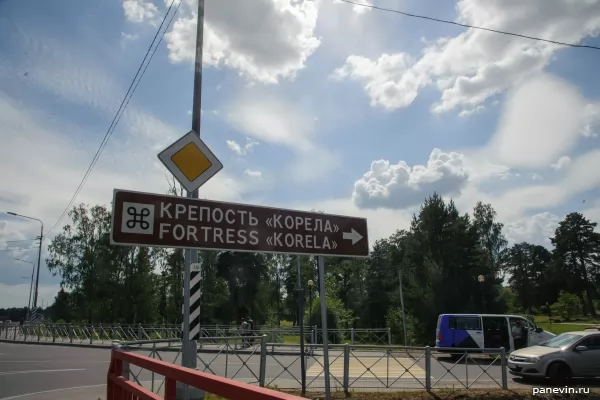
Tourist sign by the road.
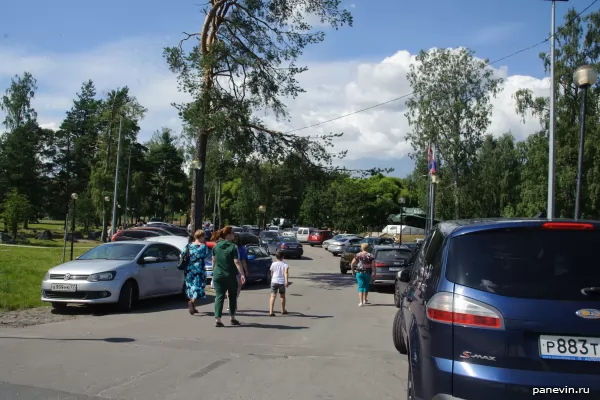
It was a fine day and many cars came for a walk around Priozersk and the fortress.
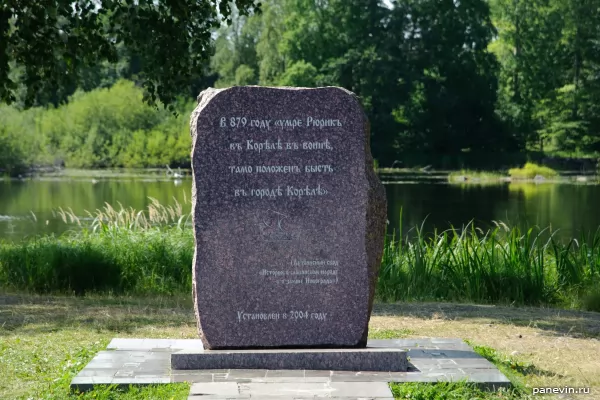
According to some sources, Prince Rurik died here in 879, as the inscription on the memorial stone says.
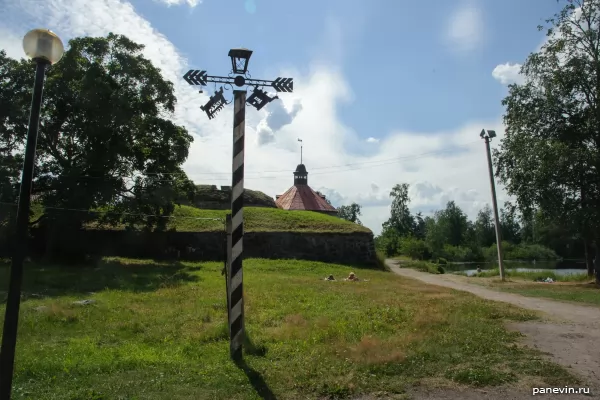
Entry sign in Russian and Finnish.
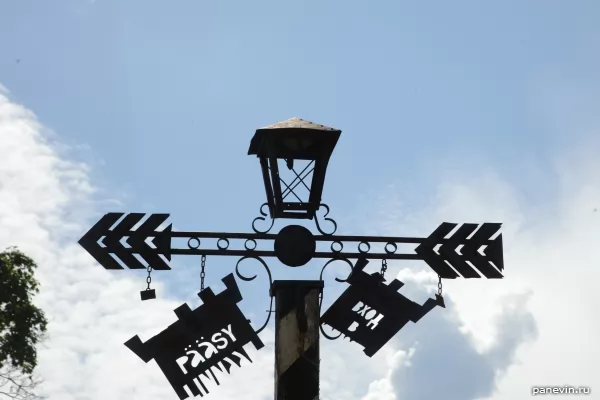
I decided to walk counterclockwise, bypassing the perimeter of the fortress.

Fortress-Museum "Korela" (Old fortress).

Old Arsenal, built in 1591, on the left behind it is the Round Gate Tower (Lars Torstensson Tower, Pugachevskaya Tower), built by the Swedes in 1585

New Arsenal. Built in 1776 for the same purposes as the old one. Nowadays there is a museum of local lore.

Memorial sign to the Kexholm regiment, Korela fortress. Installed in honor of the 300th anniversary of the regiment established by Peter I in 1710. The anchor at the base symbolizes the participation of the regiment in naval battles, crowned with a soldier's shako from a Keksholm. On the sides there are mock-ups of 18th century cannons.

A stand with a brief history of the Life Guards of the Kexholm Emperor of the Austrian Regiment.

Cavalier Bastion on the site of the Trubnaya Tower, 1592.
There was a powder magazine inside.

Forged two-horned anchor with a wooden stock from the Swedish brig-cotter "Dragon", which sank in the Vyborg Bay on July 3, 1790 during the famous Vyborg sea battle the Russian fleet won a brilliant victory over the Swedish fleet.

Gate Tower
Round Gate Tower (Lars Torstensson Tower, Pugachevskaya Tower), built by the Swedes in 1585.
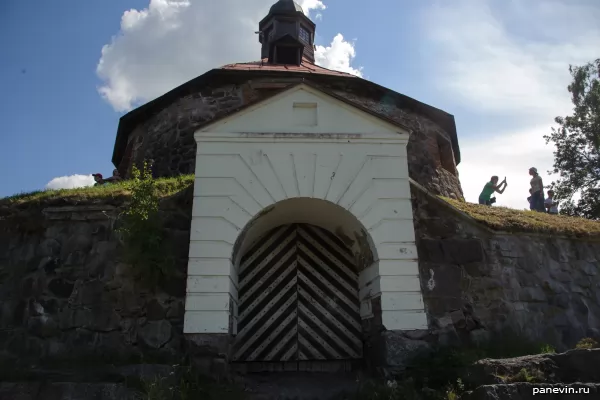
The Gate Tower, a view from the outside of the fortress.
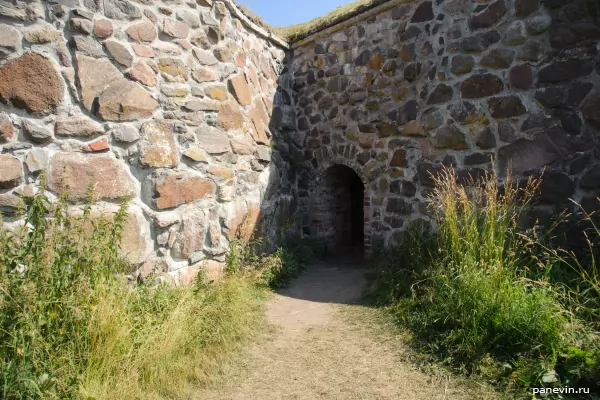
Fortress wall with "secret" gates. This is a distinctive feature of the ancient Russian fortification.
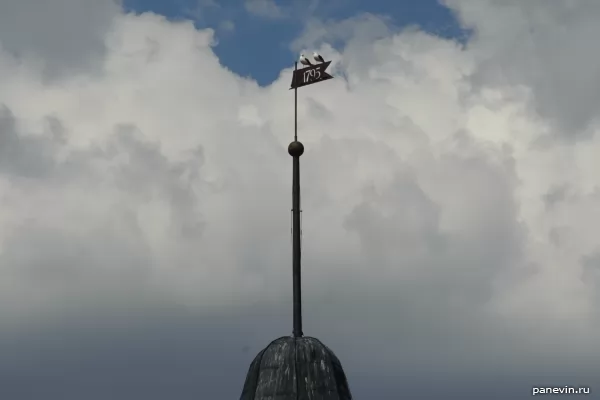
The wooden spire is crowned with the flag with the date 1795. This is not the date of the fortress construction - the fortress is much older. This is the date of the next perestroika.
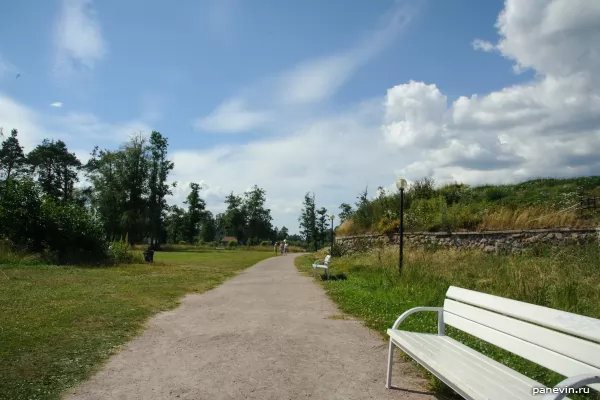
There is an excellent path with lanterns and benches around the fortress. However, there are not enough benches.
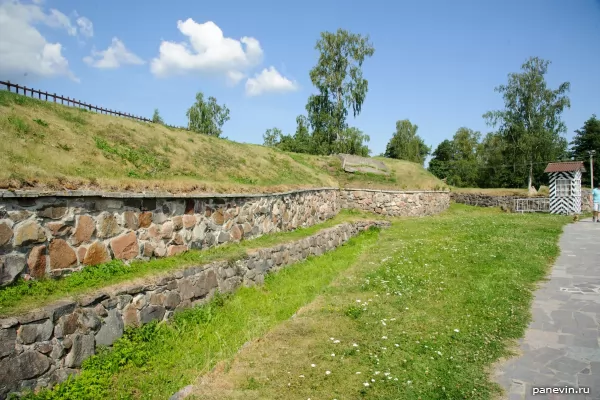
Bastion Bastion (Bannaya, Residential or Pristanny Rondel) on the right, 1590. Left - Tenal (frontal fortifications).
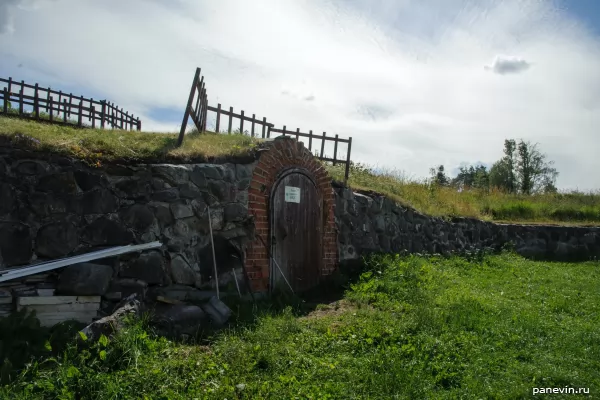
A door to some kind of service room.
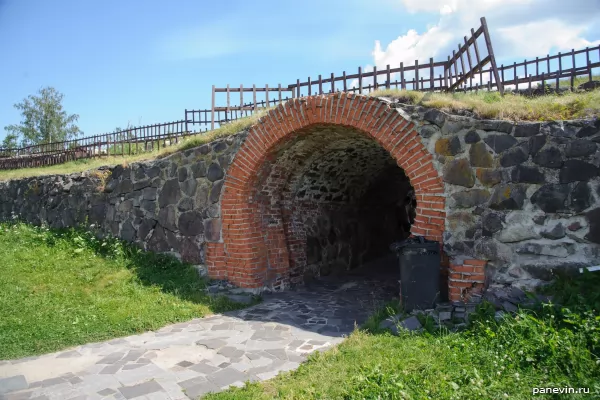
Water (Mill) Gate, circa 1590. The main entrance to the territory of the fortress.
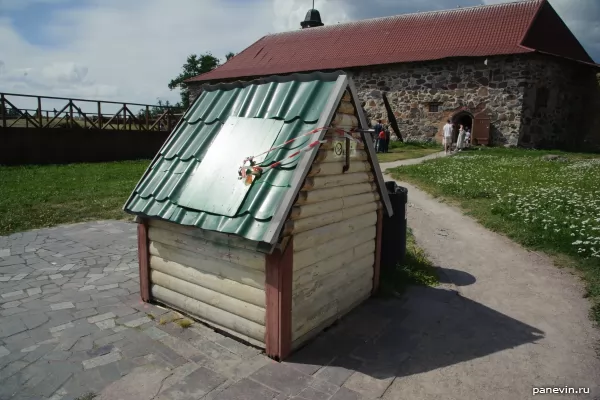
Well. The handle has a “do not twist” sign, but the handle is screwed on. For everyone. I think there are a lot of people who want to play.
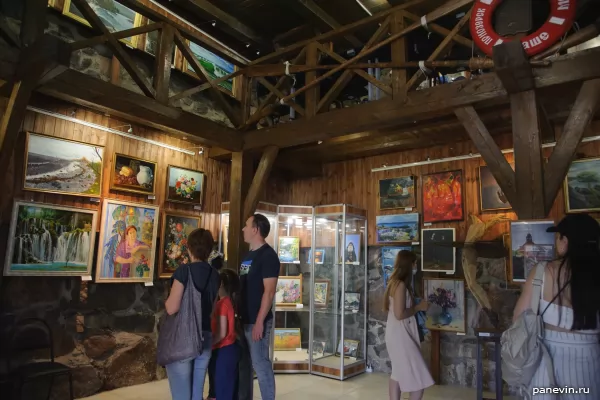
There is an exhibition of paintings in the Gate Tower.
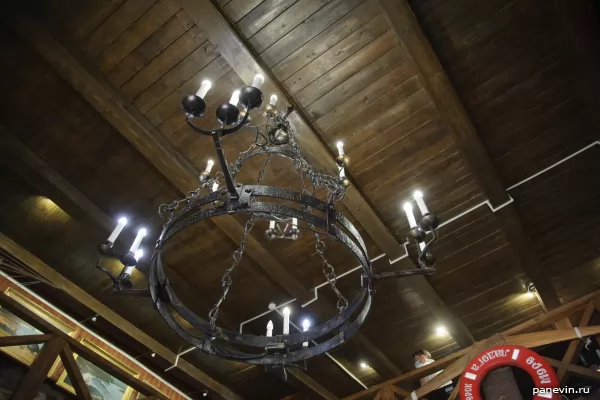
Chandelier a la medieval.
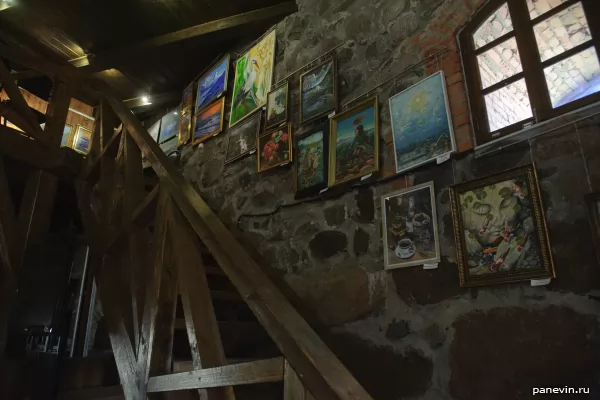
Pictures are mainly on two themes: nature of Karelia
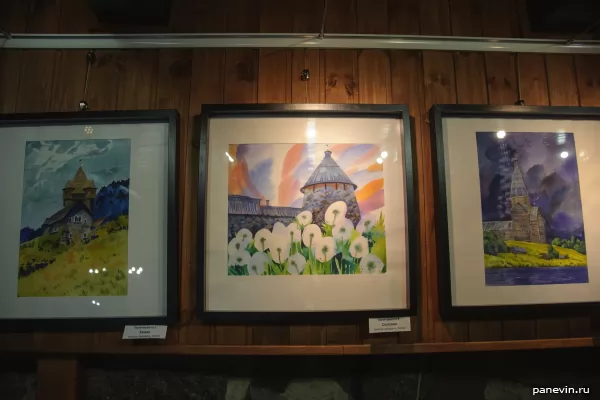
and Karelian fortresses.
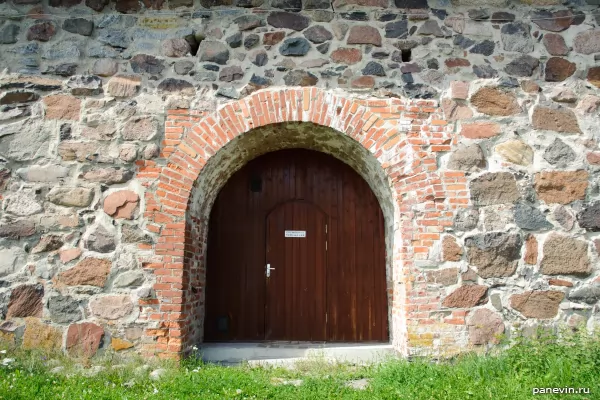
A door to a utility room.
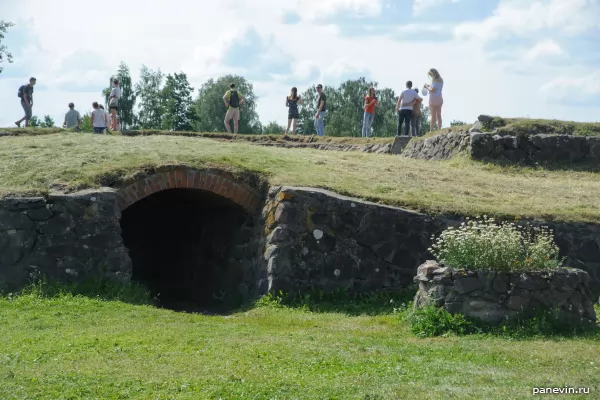
Ancient well (right) and Fish Gate in Klok Bastion (Masovaya or Fish Rondel, 1590s).
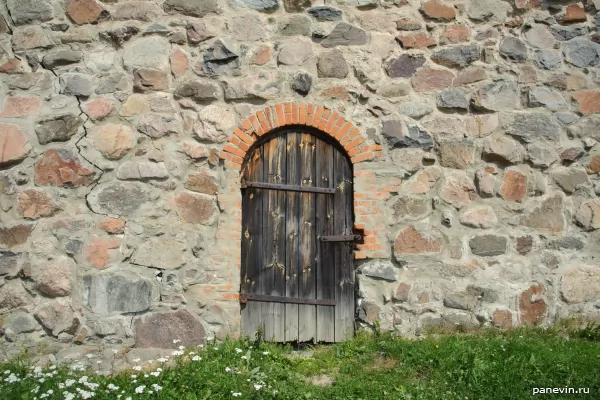
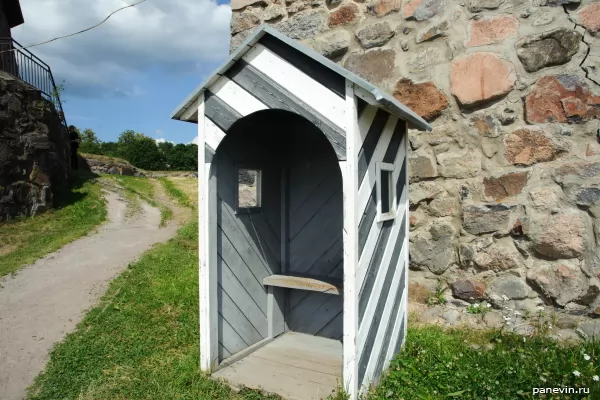
Guardhouse.
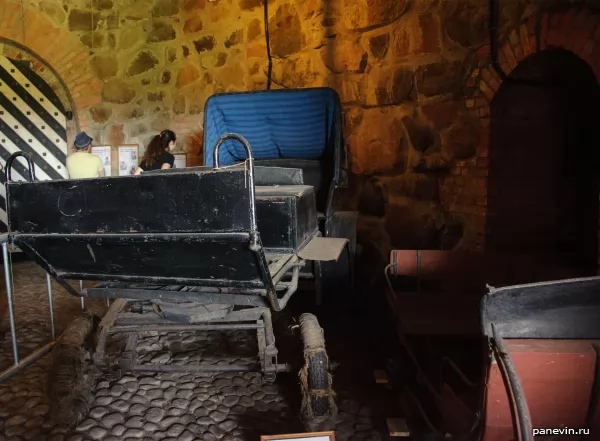
A carriage and a sleigh inside the Petrovsky gate. In the 18th century, the border was pushed far to the west, defensively, the fortress lost its meaning and, like the Oreshek fortress, was used as a prison.
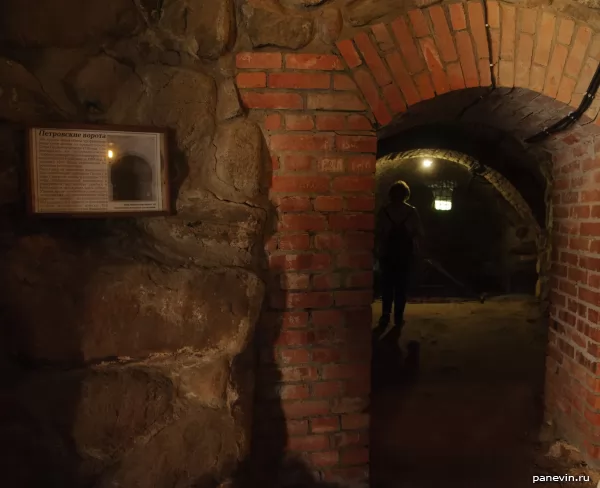
In September 1710, the Swedes were driven out of the city and Peter I personally ordered the wooden gate to be upholstered with captured Swedish armor. In 1994, the armor was transferred to the territory of the New Fortress at the request of the restorers.
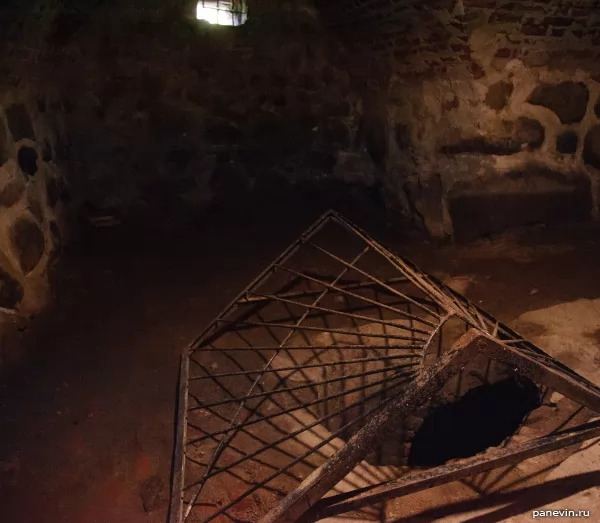
The Pugachevs Chamber. Since January 24, 1775, this room has housed the Pugachev family - the first wife Sofya Dmitrievna with three children, as well as the second wife “the Ural queen” Ustinya Petrovna Kuznetsova.

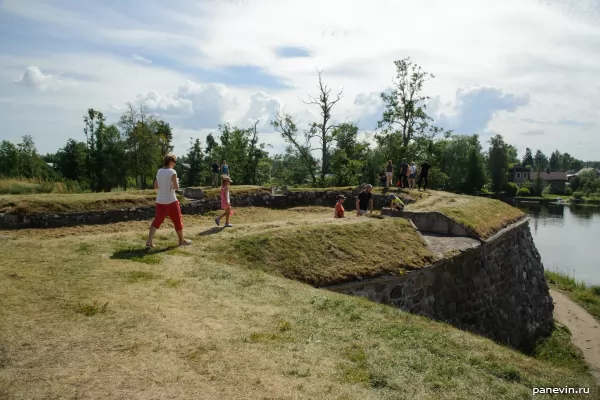
Clockwork Bastion
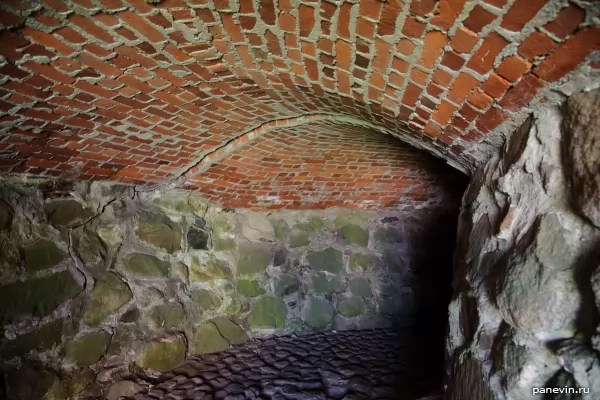
Fish (Clock) Gate.
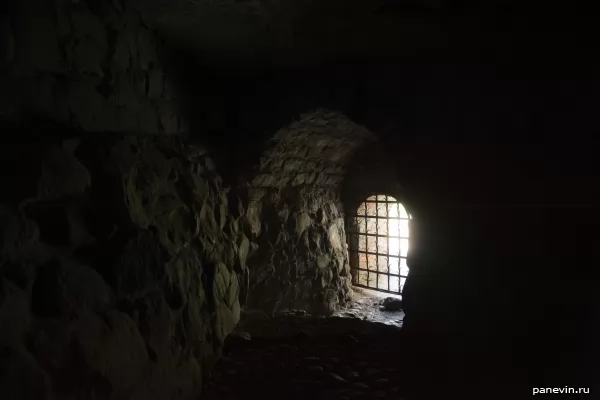
The grill that covers the Fish Gate from the outside.
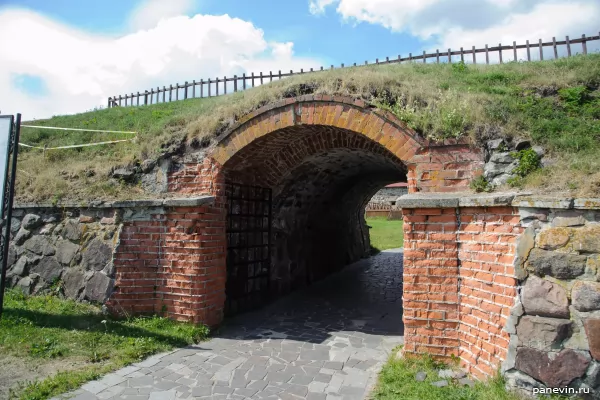
Water Gate.
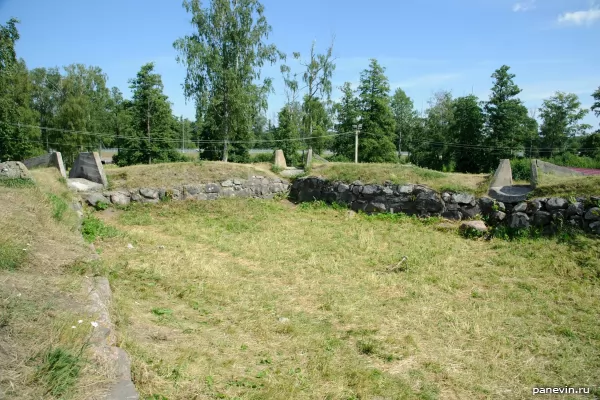
Bastion Bastion, there were guns in niches in the 18th century.
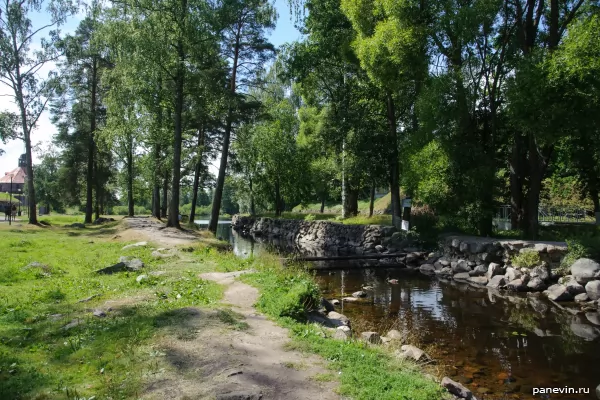
The channel between the "Old" and "New" fortresses.
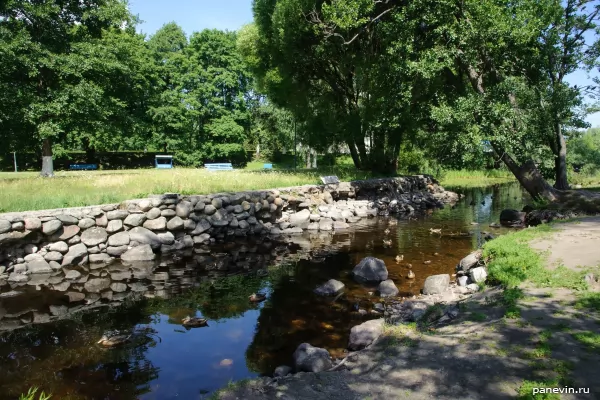
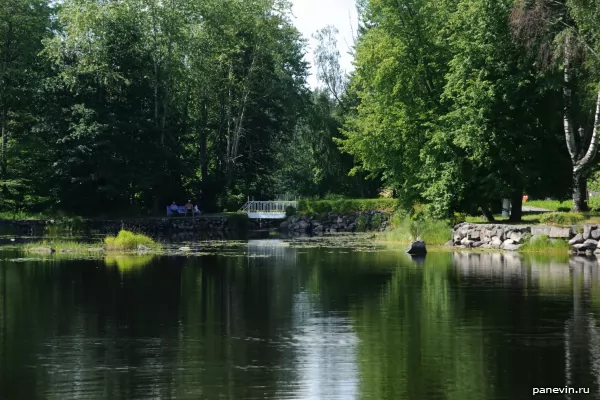
There is a wonderful lake near the fortress walls.
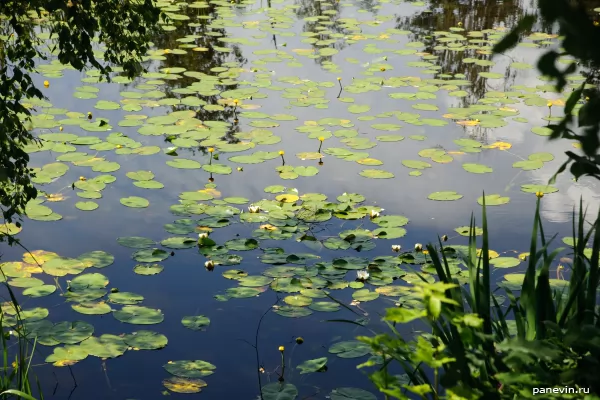
Water lilies, lilies, beauty!
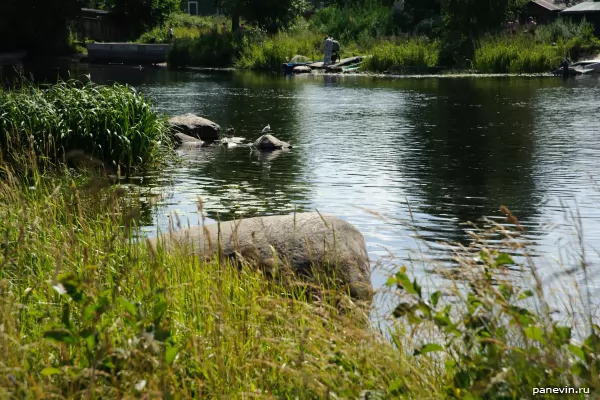
Terns hang out in the pond
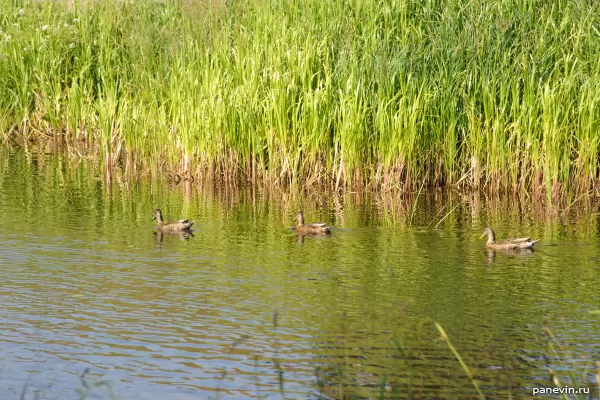
And ducks, periodically arranging fights with terns for territory.
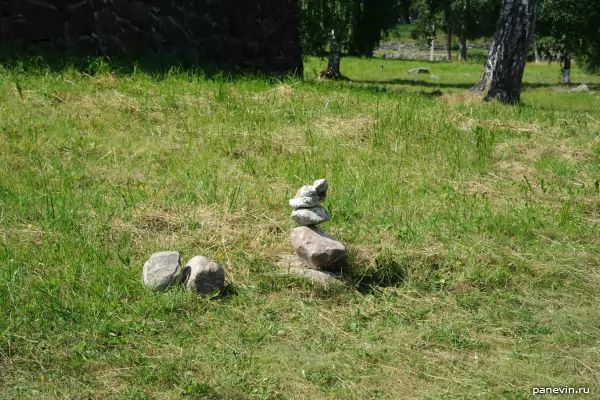
In Karelia you can often find such pillars of stones. No one remembers the meaning of stacking stones like this, but pagan traditions are still alive.
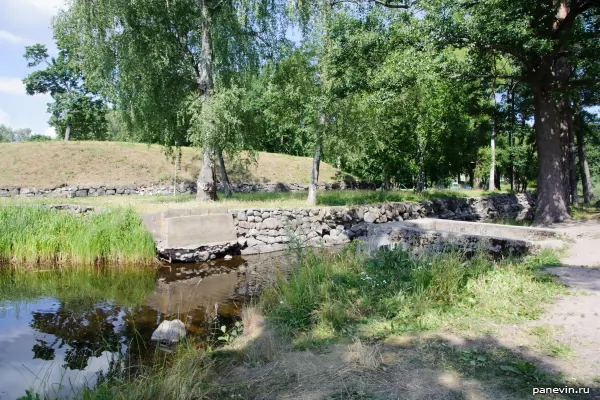
In the foreground is the base of the former bridge, in the back are the remains of the fortifications of the New Fortress (there is now the MO sanatorium and you just can't get there).
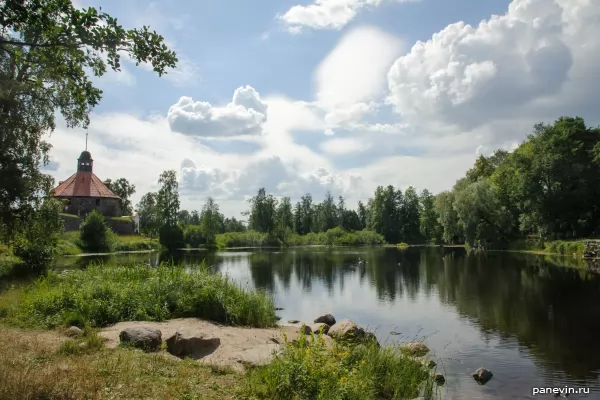
A wonderful place to relax under the shade of trees
Medieval Korela was the most northwestern city of Russia. The fortress was founded at the turn of the XIII and XIV centuries by Novgorodians on the island of the Uzerve (Vuoksy) river to protect the north-western borders of the republic from the Swedes. However, the history of the city is possibly even more ancient.
How to get to the Korela fortress: the easiest and fastest way is by electric train "Lastochka" from Finland Station in St. Petersburg. One-way ticket 400-420 rubles, entrance to the territory of the fortress - 100 rubles, visiting the museum is free (!)
Share:
Themes: fortification 35 fortresses 25 photos 417 travel 286
← Blog
krepost-muzey_korela
blog









